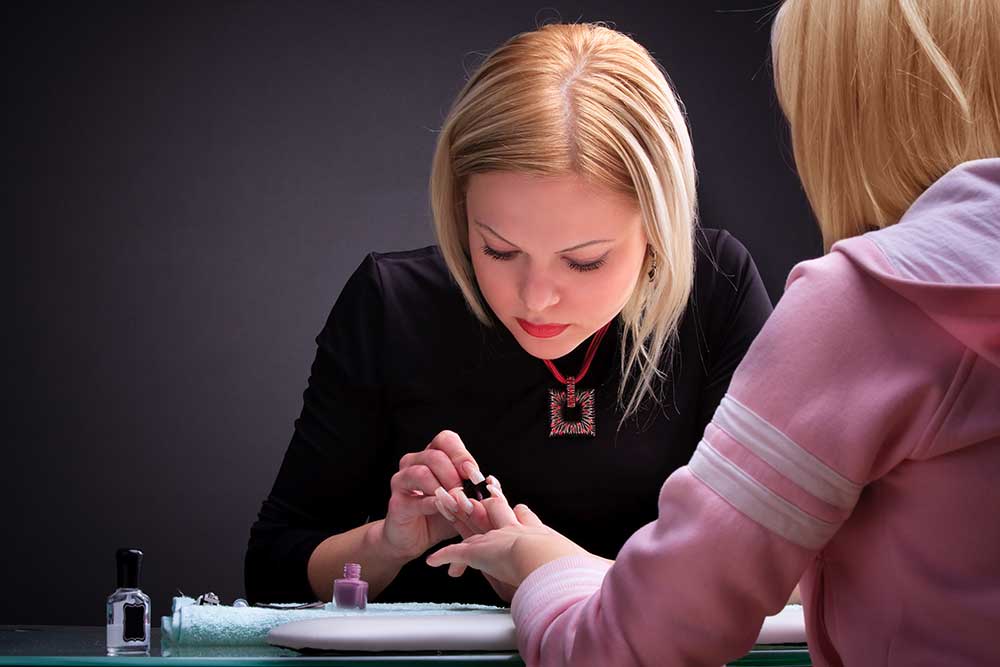Disclaimer: The information on our website is provided for general information purposes only. We make no representations or warranties of any kind, express or implied, about the completeness, accuracy, reliability, suitability or availability with respect to the website or the information contained on our website for any purpose. Any reliance on such information is therefore strictly at your own risk and we are not liable for any damages or losses arising out of or resulting from your reliance on any information contained on our website.
A manicurist and pedicurist specializes in making hands, feet, and nails beautiful. Additionally, they soak nails, remove dead skin cells, and apply moisturizing lotion. In fact, they also have the opportunity to be artistic as they also paint nails and use trending designs and techniques. Along with styling real nails, they also apply and paint artificial nails when requested. Next, watch a video to learn what a manicurist and pedicurist does.
How to Become a Manicurist and Pedicurist
A manicurist and pedicurist is required to complete a state-approved cosmetology program or nail technician program and pass the state exam that includes written and practical portions in order to receive a valid license to work. Connecticut is the only state with exception. You must be at least 16 years old and have a high school diploma or the equivalent.
Job Description of a Manicurist and Pedicurist

Manicurists and pedicurists use nail clippers and nail files that are sharp. Therefore, a manicurist and pedicurist must remain focused and must also clean and sanitize their tools. He or she requires the skills of business and creativity. They should be skilled at customer service and be able to listen attentively to a client.
A manicurist and pedicurist can be found working in spas, nail salons, or private homes. They should excel at customer service and be able to build relationships with clients to ensure they have repeat customers. They tend to work a variety of schedules, mostly full-time with nights, weekends, and holidays being their busiest times. The service provided is considered to be a low-cost luxury service and will continue to be in demand by all income levels.
Manicurist and Pedicurist Career Video Transcript
Manicurists and pedicurists work on the hands and feet, grooming fingernails and toenails. They explain services and options available to customers, then offer a treatment, usually starting by soaking the clients’ hands or feet, reducing calluses, and applying lotion to moisturize the skin. The final step is to trim and file nails and apply polish or artificial fingernails.
Repeat business is critical in this field, so customer satisfaction is key. Good listening and interpersonal skills are helpful, along with creativity and precision to create well-finished nails that appeal to each customer. Using sharp tools requires care and a steady hand. Some manicurists and pedicurists operate their own nail salon business. They manage employees, keep inventory, and order supplies. A small but growing number of workers make house calls. Manicurists and pedicurists usually work in a nail salon, spa, or hair salon. The job involves a lot of sitting. Because of fumes and toxic exposure from nail polish and other chemicals, they often wear gloves and masks.
Although most manicurists and pedicurists work full-time including weekends and evenings, many have variable schedules and work part-time. Longer workdays are typical for those who are self-employed. Manicurists and pedicurists must complete a state-approved cosmetology or nail technician program and then pass a state exam for licensure.
Article Citations
Bureau of Labor Statistics, U.S. Department of Labor, Occupational Outlook Handbook, Manicurists and Pedicurists.
National Center for O*NET Development. 39-5092.00. O*NET OnLine.
The career video is in the public domain from the U. S. Department of Labor, Employment and Training Administration.

